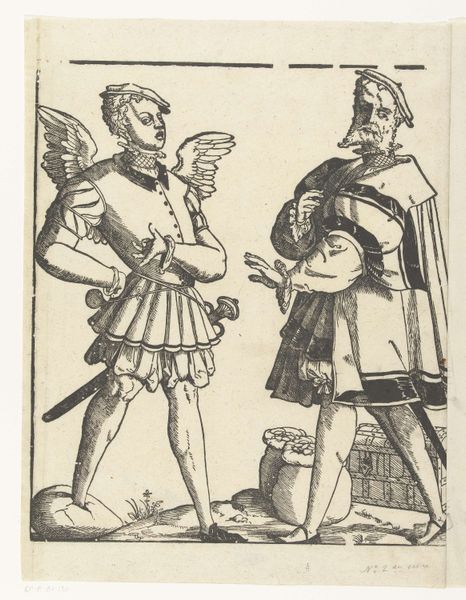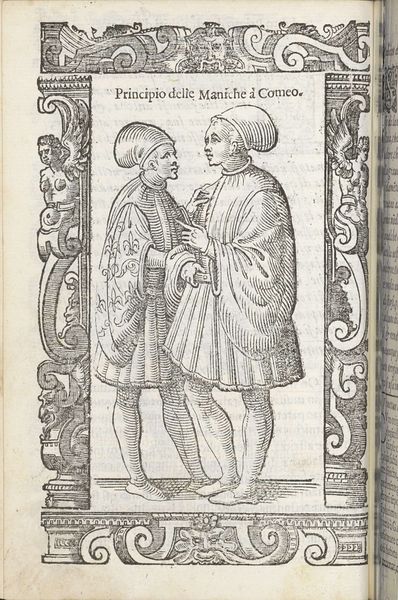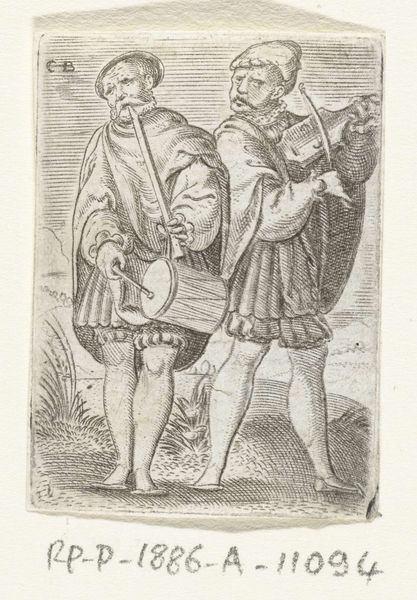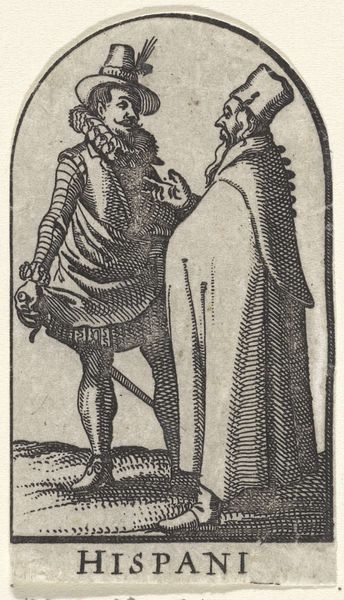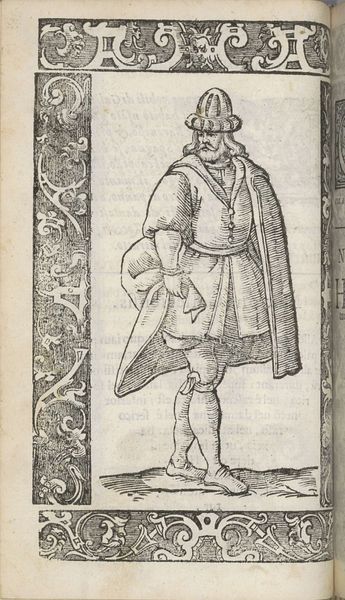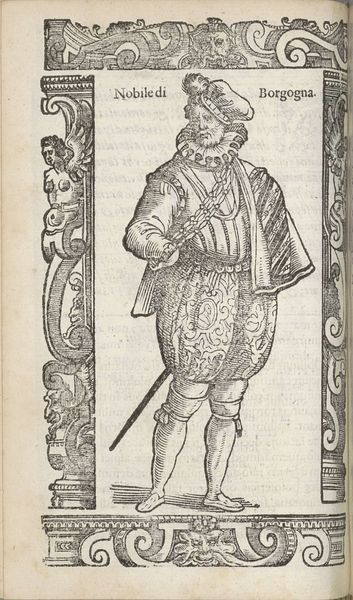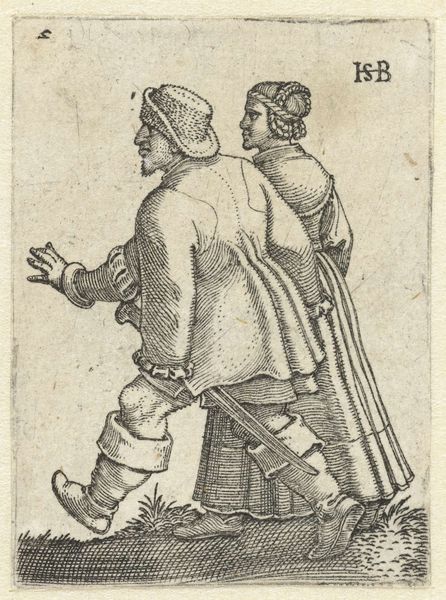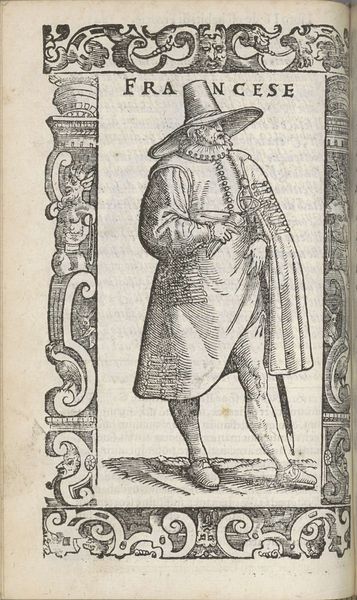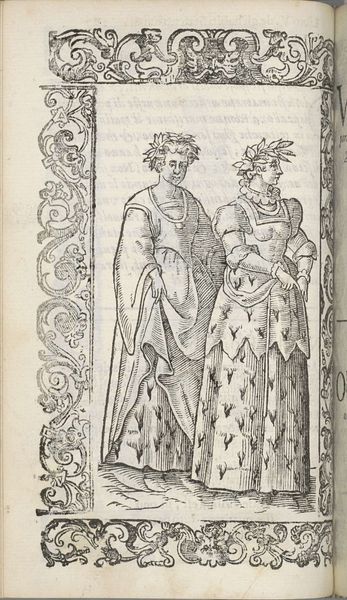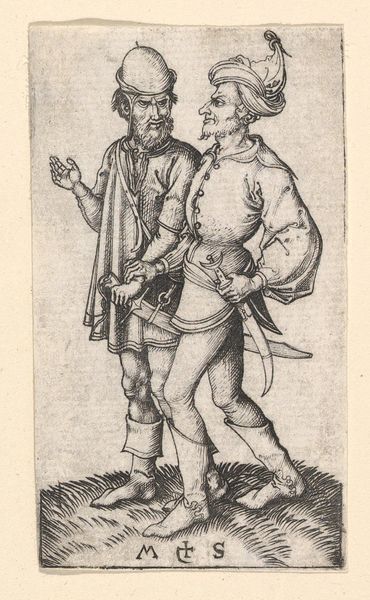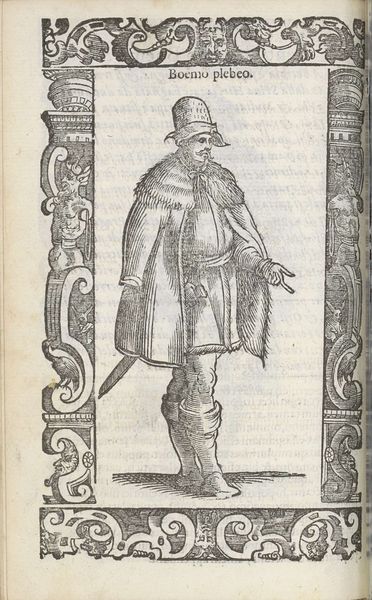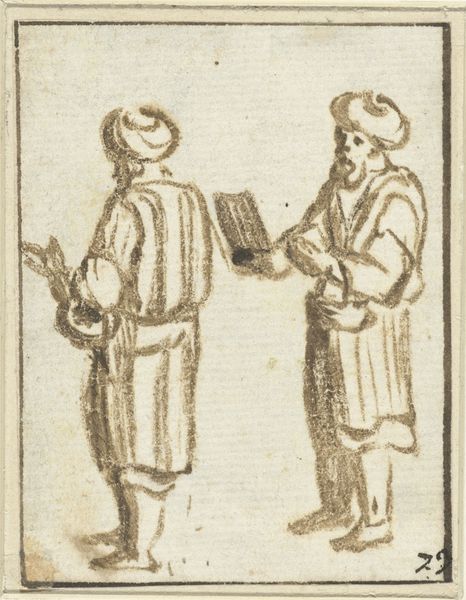
print, engraving
#
portrait
#
medieval
# print
#
old engraving style
#
figuration
#
form
#
line
#
genre-painting
#
history-painting
#
italian-renaissance
#
engraving
Dimensions: height 167 mm, width 125 mm
Copyright: Rijks Museum: Open Domain
Curator: Looking at this, I immediately sense a study in contrasts, a visual conversation frozen in time. Editor: Indeed. We're observing Christoph Krieger's "Giovanni antichi," an engraving from 1598. What strikes me is the way the printmaking process itself speaks to the social context. The lines, the precision – it all points to a carefully crafted object, designed for circulation and consumption within a specific network. Curator: Absolutely, the linear quality is remarkable. Considering the moment this piece was made, I can't help but ponder the identity of these figures, Giovanni specifically. Who were they? What sociopolitical statements is Krieger trying to make, immortalizing him through this very reproducible medium? Editor: Right. The material production dictates its own constraints. Think of the paper, the ink, the press – each element requiring skilled labor. The resulting prints then become commodities themselves, traveling and disseminating ideas beyond the elite circles who could afford original paintings. Curator: And that dissemination changes everything, right? Suddenly, portraiture and these depictions aren’t just for the upper class. Looking at the line work, there's almost a radical potential—offering a new access point, shifting notions around who gets represented and remembered in visual culture. It invites conversations about who's holding the means of production in 1598 and why? Editor: I agree. Consider too the tradition of printmaking during the Italian Renaissance: apprenticeship, the workshop, the division of labor. Who made the paper? Who ground the inks? All this labor made Krieger’s piece reproducible and therefore gave it potential for greater social impact. Curator: So in the end, we are contemplating more than just “Giovanni antichi.” It’s a complex matrix of personhood, social messaging, and materiality all layered into the history. Editor: Yes, Krieger's print exists as an object, but it's also a point of entry into thinking critically about labor, materials, and networks of exchange that shaped its creation. Curator: Thank you, by bringing to light its physical history, the work then truly shows its face, so to speak. Editor: An approach that really enriches our experience of this intricate image, allowing to see its tangible aspects within a historical frame.
Comments
No comments
Be the first to comment and join the conversation on the ultimate creative platform.
